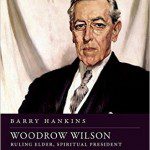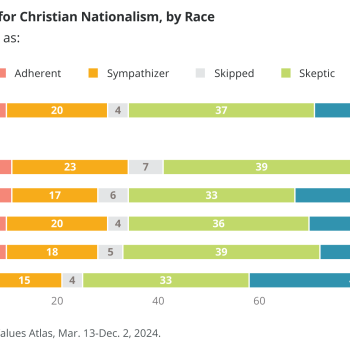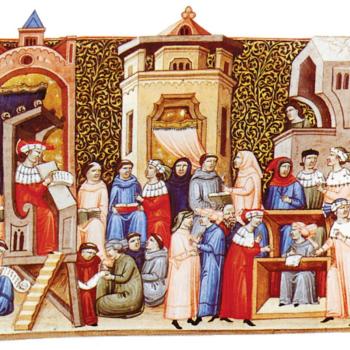As David’s sabbatical in Thailand continues, we welcome Rusty Hawkins to The Anxious Bench for a timely guest post on the history of school choice. Rusty is associate professor of history and humanities and the associate director of the John Wesley Honors College at Indiana Wesleyan University. He is the co-editor of Christians and the Color Line: Race and Religion after Divided by Faith (Oxford, 2013), and is currently finishing a book on white evangelical resistance to the civil rights movement.
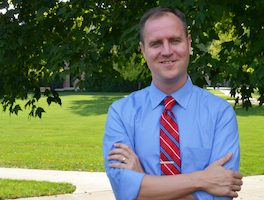 With the recent confirmation of Betsy DeVos as the nation’s new education secretary, the issue of school choice is all but certain to become a significant part of policy discussions over the next four years. As Americans learned in the course of her contested confirmation, DeVos is an avid proponent of charter schools and voucher programs as alternatives for students attending under-performing public schools. In all likelihood, Americans will increasingly need to weigh the merit of charter schools and voucher programs during DeVos’s tenure at the Department of Education.
With the recent confirmation of Betsy DeVos as the nation’s new education secretary, the issue of school choice is all but certain to become a significant part of policy discussions over the next four years. As Americans learned in the course of her contested confirmation, DeVos is an avid proponent of charter schools and voucher programs as alternatives for students attending under-performing public schools. In all likelihood, Americans will increasingly need to weigh the merit of charter schools and voucher programs during DeVos’s tenure at the Department of Education.
So historical perspectives are all the more urgent and, potentially, instructive. They can help us understand how white parents who exercised school choice in the past unintentionally contributed to the perceived necessity of school choice today. To state it plainly, school choice benefited some, but at a high cost to others. A clear example of the cost-benefit calculus of school choice can be found in a well-known Hollywood movie that, on the surface, celebrates the possibilities offered by school choice, even as it obscures the historical roots and consequences of that course of action.
The 2009 movie, The Blind Side (starring Sandra Bullock and based on the Michael Lewis book of the same title) tells the true story of an African American boy from inner-city Memphis named Michael Oher who, through a series of events, ends up applying to Briarcrest Christian School in the Memphis suburbs. Oher initially caught the eye of the Briarcrest football coach because of his size—344 pounds as a high school sophomore!—but didn’t have the academic standing to be admitted to the school. Oher had attended eleven different Memphis public schools by the time he was a freshman in high school. Although he had never achieved passing grades, Oher had nevertheless been promoted at the end of each year, evidently because it was less troublesome to simply pass him through the system than to have him stay longer than the required twelve years. Despite not having the grades required for admission to Briarcrest Christian, the school’s football coach made an impassioned plea to his administrators to give Oher a chance. Pointing to the school’s coat of arms with its motto, “Decidedly Academic, Distinctly Christian,” the football coach appealed to the school’s identity. Admitting Oher wasn’t about football, the coach reasoned, it was about doing what was right in accordance to the school’s Christian heritage. And so it was that Michael Oher, with an IQ registering in the ninth percentile and a 0.6 GPA, found himself admitted to Briarcrest Christian School.
Within days of matriculating to Briarcrest, Oher met Sean and Leigh Anne Tuohy, a wealthy white couple whose two children also attended the private Christian school. Leigh Anne took a special liking to Oher, despite that fact that by her own admission she was raised by her father to “fear and loathe blacks.” When Leigh Anne noticed that Oher continued to wear shorts into the Tennessee winter, she decided she needed to intervene. She later told a journalist that “God gives people money to see how you’re going to handle it,” and Leigh Anne Tuohy decided to use her family’s considerable resources on behalf of Michael Oher. Over the next three years, the Tuohys provided Oher with food and clothing. He moved into their home and they hired academic tutors to help him improve his grades and earn test scores that would meet N.C.A.A. eligibility standards. They helped him navigate the recruitment process from the major football programs that came calling. They bought him a truck. And, most significantly, the Tuohys adopted Michael Oher, who went on to be an All-American football player at the University of Mississippi and first-round draft pick in the National Football League. When the heartwarming story of Michael Oher and the Tuohys’ relationship appeared in the New York Times Magazine, the article ended on a note that tried to keep the good vibes going: Sean and Leigh Anne Tuohy, “were so pleased with the results of their experiment that they began to figure out how best to go back into the inner city and do it all over again.”
Justice for Michael Oher—whether it’s defined it as material resources, educational opportunities, or a loving home—was predicated upon him escaping the failing Memphis school system and enrolling at Briarcrest Christian School. In other words, as Secretary DeVos would no doubt point out, it was school choice that made possible Oher’s success story.
But what if school choice was not only the source of Michael Oher’s salvation, but also a contributing factor to the plight from which he needed saving in the first place?
Briarcrest Christian School opened its doors in the fall of 1973, part of an explosion of private schools across the South around that time. The growth of private schools started in the late 1960s after the Supreme Court ruled that southern schools must demonstrate substantial desegregation and began to crescendo in the wake of the 1971 Supreme Court decision that sanctioned busing as an acceptable instrument to achieve this substantial desegregation. In October 1969, an estimated 300,000 white students throughout the South were enrolled in private schools where racial segregation was upheld. Following the Supreme Court ruling the next month, which ordered school districts to integrate “at once,” the enrollment in private schools jumped 33%. By 1971 the number of pupils attending segregated private schools in the South topped a half-million and continued to rise.1 By 1974, twenty years after the Supreme Court handed down its Brown decision, it was estimated that between three and four thousand private schools had been established in southern states whose roots could be found in the desegregation of public schools. Attendance at these “segregationist academies,” as their critics called them, accounted for an estimated 750,000 white schoolchildren whose parents pulled their children from publicly funded schools and paid to enroll them in these newly established private institutions.2
Among those white parents willing to pay private school tuition to keep his daughter out of the integrated Memphis public schools in the early 1970s was Leigh Anne Tuohy’s father. When those schools integrated in 1973, Leigh Anne’s father, a United States marshal, moved his daughter to the newly created Briarcrest Christian School. As a member of the school’s first class, Leigh Anne never doubted the cause of her father’s decision to send her Briarcrest, telling Lewis years later that “I was raised in a very racist household.”
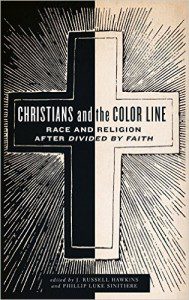 Briarcrest Christian proved to be a safe place for a father looking to keep his daughter from racial integration in 1973. Two years after the school opened its doors, all of its 1,432 students and 69 faculty and staff were white. Officially, the school had an open racial admissions policy, but, as one Briarcrest student said at the time, “I left the public schools to get away from blacks. If they came here, I don’t think they would be welcome at all.” The Baptist minister who ran Briarcrest was equally candid when speaking about the source of his school’s appeal: “We’ve got parents who are running from problems. Anyone who says different isn’t telling the truth.”3
Briarcrest Christian proved to be a safe place for a father looking to keep his daughter from racial integration in 1973. Two years after the school opened its doors, all of its 1,432 students and 69 faculty and staff were white. Officially, the school had an open racial admissions policy, but, as one Briarcrest student said at the time, “I left the public schools to get away from blacks. If they came here, I don’t think they would be welcome at all.” The Baptist minister who ran Briarcrest was equally candid when speaking about the source of his school’s appeal: “We’ve got parents who are running from problems. Anyone who says different isn’t telling the truth.”3
Those parents running from problems spared no expense in setting their children’s new school on a trajectory for success. By 1975, Briarcrest occupied a new $6.5 million building complete with language labs, pottery kilns, and a teaching staff with advanced degrees. Briarcrest’s success came at the expense of the very public school system that Michael Oher would inherit twenty five years later. The year before Briarcrest opened its doors, the Memphis public schools had a racial balance of 50% black and 50% white. By 1975, after 25,000 white students had fled for the “safety” of private schools like Briarcrest, Memphis public schools were 70% black—a number that would rise over the next two decades. By the time Michael Oher began attending Memphis public schools, he was reaping what the white flight of the 1970s had sown: a “pauper system” of hyper-segregated schools with limited resources and even less public support for school bond initiatives that would help improve the schools. When white families left the Memphis schools, they took with them capital (both material and social) and invested it in places like Briarcrest. Michael Oher was able to escape the Memphis schools and receive the benefits of Sean and Leigh Anne’s investment. But thousands of other black and brown students remained trapped in a system that Briarcrest in part helped create.
Leigh Anne can and should be praised for helping Michael Oher and desiring to go back to the inner-city and “do it all over again.” Doing so required her to overcome the racial prejudice with which she was raised, which is no small thing. But at the same time, structures and systems born from the fear that made Briarcrest a necessity for Leigh Anne’s and so many other white families remain in place. Leigh Anne’s ongoing participation in Briarcrest is in some ways perpetuating the system whose detrimental effects she is seeking to alleviate—one Michael Oher at a time.
The paradox inhabited by Leigh Ann Tuohy is the paradox at the center of much of the debate that will swirl around school choice in the months and years ahead. Charter schools and voucher programs may well benefit the individuals who decide to utilize them. But will the reallocation of resources required to fund those individual decisions further diminish the public schools and opportunities for the students left behind in them? If history is any indication, the answer is as predictable as a Sandra Bullock movie.
Notes
1 Kitty Terjen, “Close-up on Segregation Academies,” New South (Fall 1972), 50.
2 David Nevin, The Schools That Fear Built: Segregationist Academies in the South, (Atlanta: Acropolis Books, 1976), 9.
3 “Segregated Academies,” Time, December 15, 1975.


